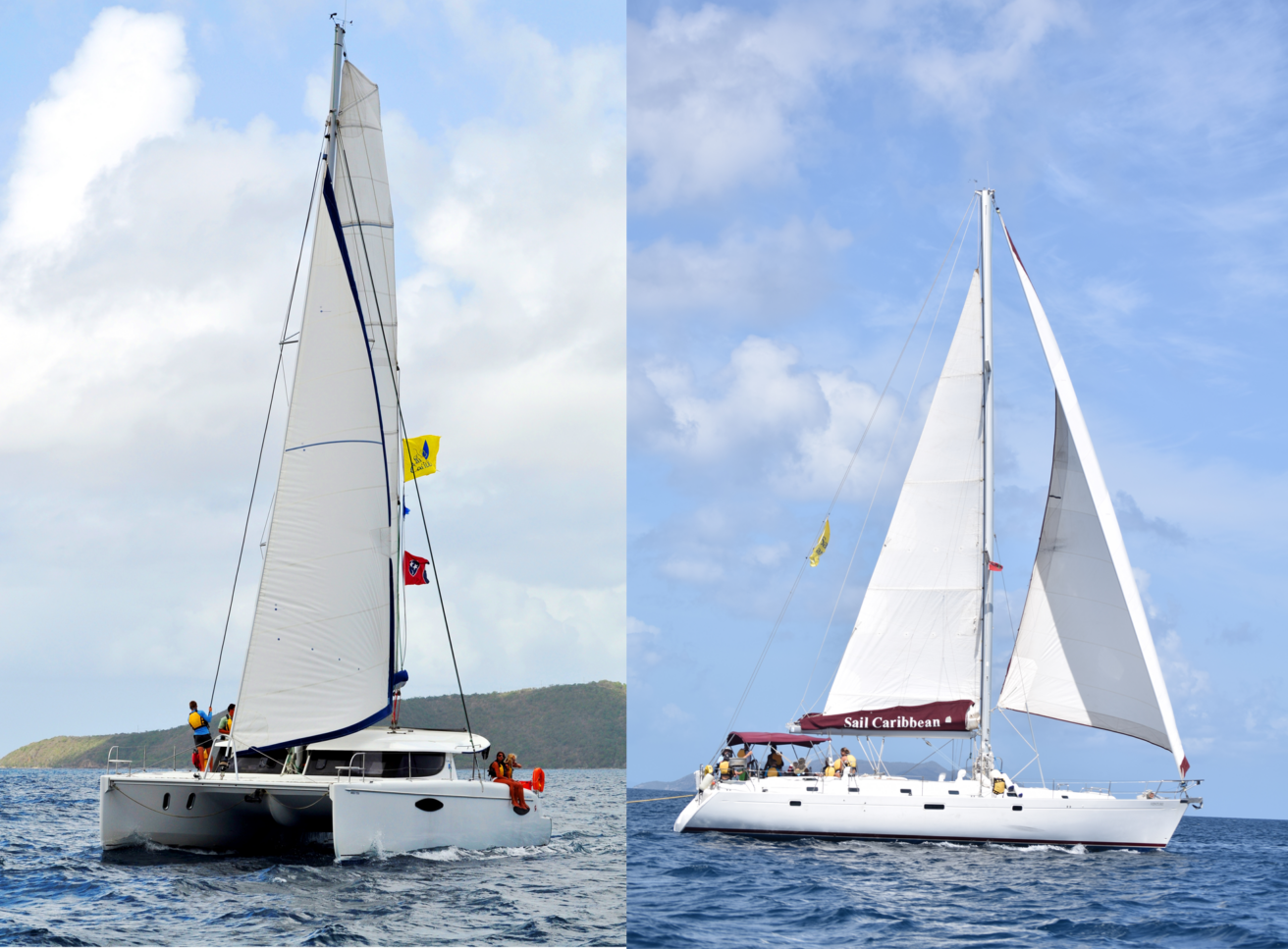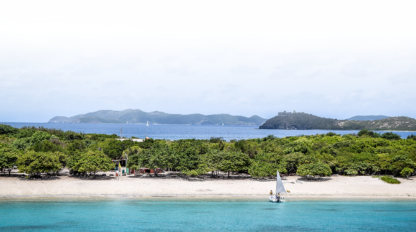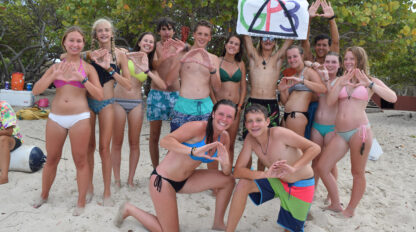Monohull vs Catamaran: Appreciating the Rivalry

 When you think sailboat, you probably envision a traditional monohull. That’s a boat with only one hull or keel. A catamaran has two hulls that are connected. At Sail Caribbean, we use both types of yachts depending on the program you choose. There are differences in design and function unique to both.
When you think sailboat, you probably envision a traditional monohull. That’s a boat with only one hull or keel. A catamaran has two hulls that are connected. At Sail Caribbean, we use both types of yachts depending on the program you choose. There are differences in design and function unique to both.
If you want to really feel sailing, there’s nothing like monohulls. A lead keel extends deep into the water and keeps the boat upright. The keel allows the boat to heel (lean over on its side) in reaction to the wind’s pressure on the sails. A slight heel tends to make the boat move faster because more hull is out of the water, so there is less friction. Heeling too much can make the boat difficult to steer, but adjustments can be made. One of those adjustments is moving the crew to the windward side of the boat which can make for an exciting ride!
In comparison, a catamaran (cat for short) is considerably more stable. The two hulls keep the deck practically horizontal to the water. In fact, it’s so stable that it
is unusual for anything in the cabin to fall or shift when under sail. No need to worry about dishes left on the counter or drinks spilling. You won’t roll side to side when napping in the forward trampoline (net), but you might bounce up and down a bit.
Tacking is a sailing maneuver where you steer the bow of the boat through the wind until the sails fill with wind from the other side. This takes teamwork and timing. On our monohull sailing programs,  crews work together to perform ‘timed’ tacks, working down to completing in mere seconds. Tacking on a cat can prove to be much more challenging at times. The main problem lies in the loss of momentum by the cat as the tack is performed. Two hulls moving across the water just has more resistance. If a tack is not completed quickly, the cat may come to a stop before the wind fills the sails on the other side. The boat will then round back up into the wind and become caught ‘in irons’ (stalled and unable to maneuver). But, as that old saying goes, “Practice makes perfect” on both type of crafts.
crews work together to perform ‘timed’ tacks, working down to completing in mere seconds. Tacking on a cat can prove to be much more challenging at times. The main problem lies in the loss of momentum by the cat as the tack is performed. Two hulls moving across the water just has more resistance. If a tack is not completed quickly, the cat may come to a stop before the wind fills the sails on the other side. The boat will then round back up into the wind and become caught ‘in irons’ (stalled and unable to maneuver). But, as that old saying goes, “Practice makes perfect” on both type of crafts.
The monohull draws more water than a cat. That means that the bottom of the keel reaches more feel below the waves, making navigation more interesting and challenging. When sailing a monohull, you don’t want to run aground and damage the keel. It is crucial to pay attention to the depths on the chart when planning your course. Cats don’t have keels; they just have hulls that don’t go deep at all. No worries about depth here, so you can pull up closer to shore in many locations. This is helpful when studying marine ecology on the Foxtrot and Sierra programs.
 Diehard monohull sailors insist that less is more at sea. Because of the long but narrow shape, things are more compact. For instance, in the exterior seating area, the cockpit table has sides that fold up to increase its size. The skipper also steers from this area. On a cat there’s no need for folding sides because the width of the boat is so great and the wheel is quite a distance away from the table. Everyone has plenty of room for alfresco dining without any set up at all. Cabins on a cat also tend to be a bit more spacious.
Diehard monohull sailors insist that less is more at sea. Because of the long but narrow shape, things are more compact. For instance, in the exterior seating area, the cockpit table has sides that fold up to increase its size. The skipper also steers from this area. On a cat there’s no need for folding sides because the width of the boat is so great and the wheel is quite a distance away from the table. Everyone has plenty of room for alfresco dining without any set up at all. Cabins on a cat also tend to be a bit more spacious.
No matter which type of yacht you’re aboard, you will learn the same sailing techniques and come to appreciate the boat’s design and capabilities. There is no absolute right answer when deciding between the two as there are tradeoffs with either choice. Ready? Grab your crew. Set your sails. Permission to explore the beautiful blue is granted.


